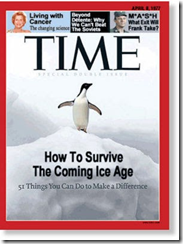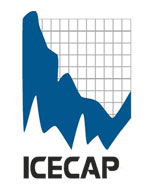By J.C. Watts
Four years ago, the State Department issued permits authorizing the construction of an oil pipeline that would cross our northern border on its way from Alberta, Canada, down to oil refineries in Texas. Along the way, this pipeline would snake through more than a half-dozen states, creating jobs and contributing to local tax bases. In fact, the pipeline would create tens of thousands of good-paying jobs, which are badly needed during this economic rut.
From all appearances, the Keystone XL pipeline was on track after the State Department’s approval. But the project hit a major snag in July 2010, when the Environmental Protection Agency overstepped its authority and claimed the State Department’s analysis was faulty because it didn’t consider oil-spill response plans, safety issues and greenhouse gas emissions. Despite approvals from states along the pipeline’s route, including my home state of Oklahoma, radical environmentalists began a massive campaign to pressure the White House to pick the EPA’s ruling over the State Department’s analysis.
An independent study estimated that the Keystone XL pipeline would contribute more than $585 million in state and local taxes to states along the route, generate more than $20 billion in new spending for the U.S. economy and significantly reduce our dependence on the Middle East and elsewhere for oil. But the environmentalists argued that the pipeline would pollute air and water supplies and harm migratory birds and other wildlife. Unfortunately for the tens of thousands of Americans who could have good-paying jobs from the Keystone XL pipeline, migratory birds won out.
The EPA’s decision to intervene in this raises some very serious questions about how and why the agency thought it had the muscle to tell the State Department it hadn’t done its job correctly. I was glad to see the Institute for Energy Research submit a Freedom of Information Act request to the EPA to turn over documents related to this decision. We have every reason to demand to know why the EPA sided with radical environmentalists over jobs.
The first elected office I held was a seat on the Oklahoma Corporation Commission, which regulates oil and gas drilling in the Sooner State. The lessons I learned as a commissioner and the ones I learned as a U.S. representative taught me that the domestic energy sector is a massive job creator and contributes a tremendous amount to our economy. Sadly, the Obama administration is following the EPA’s lead in being openly hostile to this economically valuable industry.
The Keystone XL pipeline would move 700,000 barrels of oil per day from Canada to the U.S. Part of the pipeline would pass through Cushing, Okla., where there is a glut of oil because we don’t have enough pipe to move it. That oil is just sitting there, and the Keystone project is critical to freeing up that oversupply.
Consider this: There already are about 200,000 miles of similar pipeline in the U.S., and TransCanada, the company overseeing the Keystone project, has been building pipelines in North America for more than 50 years. While we should ask hard questions about the safety of the project and how it would impact surrounding areas, TransCanada has said Keystone would include nearly 60 improvements above and beyond the standard requirements of U.S. regulators. There are built-in redundancies throughout the entire pipeline to prevent leaks. Still, this wasn’t good enough for the administration.
The radical environmental groups are running out of excuses to keep killing smart economic projects and are grasping at straws. Take their complaint that the Keystone XL pipeline would be harmful to migratory birds. The U.S. Fish and Wildlife Service estimates that about 33,000 migratory birds are killed each year by wind-turbine rotors, but we don’t see groups marching to outlaw wind turbines.
Instead, the EPA - spurred on by its radical environmental allies - is pushing for more and more job-killing regulations on industries that could play a critical role in our nation’s economic recovery. Through regulatory uncertainty and demands for expensive environmental upgrades, the EPA is slowly but surely trying to drive a nail into the coffin of job creators like those in the energy sector. Three Philadelphia-area oil refineries announced last year that they’re shuttering operations, eliminating about 20,000 direct and indirect jobs, while refiners in other states are keeping an anxious eye on their own ability to continue operating.
The United States is the most prosperous nation in the world. We have an abundance of natural resources that, if we only used them, would reduce our dependence on oil from foreign governments, some of which do not have our best interests at heart. It’s a real shame to see federal officials using political science instead of real science when making decisions on projects that would create good-paying American jobs and help turn our economy around.
J.C. Watts is a former Republican member of the House of Representatives from Oklahoma.
By By Paul Homewood, Not a lot of people know that

It is well known that there were many articles in the likes of Time Magazine and Newsweek back in the 70’s, which sensationalised the ice age scare. Warmists tend to write off this episode as just media hype. But what were the scientists saying at the time?
HH Lamb was one of the leading climate scientists at the time and founded the Climatic Research Unit at the UEA. In 1973 he wrote an article, “Is The Earth’s Climate Changing?”, for the UNESCO magazine, “The Courier”. It was a special edition devoted to climate issues and in it, HH Lamb covered a number of issues.
Early 20th Century Warming
Computations in the United States from surface air temperature observations all over the world show that from the 1880s to some time after 1940 the Earth’s climate was becoming generally warmer. The global warming over those years amounted to about half a degree Centigrade, but in the Arctic it was much stronger and amounted to several degrees between 1920 and 1940.
The ice on the Arctic seas decreased in extent by about 10 per cent and decreased in general thickness by about one third. Glaciers in all parts of the world were receding, opening up new pastures and land for cultivation.
The greater warmth increased the length of the growing season by two to three weeks in England. The wild flora and forests, the cultivation of various crops, and the ranges of seasonal migration of birds and fish, all spread to new regions under the increasingly genial conditions.
Moreover, the longest temperature records available in various northern countries from the early eighteenth century (in England from the late seventeenth century) showed that the previous warming had a very long history, traceable from the beginning of the record through various shorter-term ups and downs. This meant that the warming began before the industrial revolution and could not be altogether attributable to the effects of human activity
Post 1940 Cooling
For the past 25 to 30 years the Earth has been getting progressively cooler again. Around 1960 the cooling was particularly sharp. And there is by now widespread evidence of a corresponding reverse in the ranges of birds and fish and the success of crops and forest trees near the poleward and altitudinal limits.
The decline of prevailing temperatures since about 1945 appears to be the longest-continued downward trend since temperature records began. [This period of cooling lasted about 30 years, about 5 years longer than the recent period of warming].
Effects of The Cooling
It is perhaps here that things become most interesting. According to Lamb, among the effects of the changes of climate in recent years, which have given cause for concern are:-
- a renewed increase (especially since 1961) of the Arctic sea ice, which has created difficulties on the northern sea routes in Soviet and Canadian Arctic waters and has produced some bad seasons on the coasts of Iceland and Greenland.
- a substantial rise, also since 1961, in the levels of the great lakes in eastern equatorial Africa and, more recently, of the Great Lakes of North America.
some 200-year extremes of temperature in individual cold winters in various parts of the northern hemisphere (and probably also in the warmth of summer in 1972 in northern European U.S.S.R. and Finland).
The most serious effects, however, have probably been the long-continued droughts and deficient rainfalls in various parts of the world associated with shifts of the world’s anticyclone belts.
The subtropical anticyclones associated with the desert belt were displaced somewhat towards the equator, and the equatorial rainbelt seems to have been restricted in the range of its seasonal migrations. In consequence, rainfall increased in Africa close to the equator, causing the lakes to rise, while drought began to afflict places nearer the fringe of the desert belt, no longer reliably visited in summer by “equatorial” rains.
Rainfall at eight places in northern India, the Sudan and at 16 to 20°N in west Africa averaged 45 per cent less in the years 1968-72 than in the 1950′s. In all these areas people have been driven from their homes by the continued failure of the rains, and in the Cape Verde Islands at the same latitude in the Atlantic an emergency was declared in 1972 because of the last five years of drought.
There are indications that corresponding shifts have taken place in the anticyclone and cyclone belts of the southern hemisphere and that the droughts affecting Zambia, Rhodesia and parts of the Transvaal in recent years are essentially part of the same phenomenon. [An indication that Southern Hemisphere temperatures were also falling].
At the same time, the shifting positions from month to month, and from one year to the next, occupied by the main anticyclone centres in this belt have introduced an abnormal variability of temperature and precipitation. A similar development may explain the sequence of droughts and floods in different parts of Australia in 1972-3.
Drought over Africa
In another article in this issue of The Courier, Jean Dresch, Professor of Geography at the University of Paris and a “leading authority” on the world’s arid zones, writes in more detail about the African drought that Lamb touched on.
Famine threatens millions of villagers and herdsmen with their decimated flocks, today forced into an unprecedented migration in search of food and water, in all the West African countries to the south of the Sahara, from Mauritania to the Sudan. Its cause is drought, a prolonged decline in rainfall that has been recorded as far as central Asia, throughout the periphery of the arid zone, extending from the tropical desert of the Sahara to the continental deserts of temperate Eurasia.
A sequence of dry years is remembered in 1910-1914, when they caused a real famine. 1941 and 1942 were no better; and dry years have been succeeding one another since 1968, whereas the decade 1951-1960 was wetter. But there is no cyclical rhythm from which to predict disasters.
Drought and Floods
Jerome Namias, “one of America’s leading weather scientists”, comments in another article, “Long Range Forecasting of Drought and Floods”:-
We are all aware of the ravages of natural events of the recent past, the devastating Russian drought of 1972; current drought in sub-Saharan countries, especially Mali, Mauritania and the Upper Volta, which seems to have persisted and become aggravated in the last few years; the occasional seasonal droughts in parts of India and Australia and the “Seca” or” drought which occurs in some years in northeast Brazil.
On the wet side, we have the eastern U.S.A. floods in June, 1972, associated, in part, with hurricane Agnes the most costly storm in U.S. history, and we remember the 1966 tragic flood of Florence. These are but a sample of spectacular events from the climatological record.
From time immemorial there have been occasions when nature “goes on a rampage” and makes it appear that the climate is changing. Why does nature do this? Unfortunately man does not yet fully understand the causes of these events, and therefore he is unable to predict them reliably. [He obviously did not know about the all powerful influence of a minor trace gas].
Final Word
Were they worried about what the future would bring? They might not have talked in the apocalyptic language of Time, but there was certainly concern. I will leave the final comment to HH Lamb:-
All these events have raised an anxious demand for ultra-long-range forecasting of climate, which calls for intensified effort towards understanding of the atmosphere (and its interactions with the ocean) and for further reconstruction of the facts of the past climatic record.
That was quite a performance Thursday at Prince George’s Community College when President Obama spoke on energy issues. He repeated so many Big Green energy myths that even the most obsessive environmentalists must surely have been exhilarated. One of those myths deserves particular attention because it is at the core of Obama’s “clean energy” agenda for America’s future. As he so frequently does, Obama repeated the misleading assertion that America has only 2 percent of the world’s proven oil reserves but uses 20 percent of all the oil consumed every year.
That claim is at such variance with the facts that even some liberal mainstream media people are beginning to question it. Glenn Kessler of the Washington Post Fact Checker column, for example, concluded yesterday that, while “on the surface, the president’s numbers are correct, based on official government data,” they are actually “two bits of information that bear little relationship to each other.” Thus, Kessler categorized Obama’s claim as a “non sequitur fact.”
Kessler is right because Obama’s 2 percent figure represents only “proven reserves,” which represent a narrow slice of what is actually underground. According to the federal Energy Information Administration, the 2 percent equals about 22 billion producible barrels. Obama would be more honest with Americans if he instead cited the government’s estimates of “undiscovered technically recoverable oil,” of which there are 140 billion barrels. How much of that becomes available depends mostly on technology. With the development of horizontal drilling, hydraulic fracturing and other new technologies, however, there is little doubt Americans will get the vast majority of those 140 billion barrels.
But to appreciate the true magnitude of as-yet untapped oil resources in or near the United States, consider these facts: The Institute for Energy Research reported last December that government data puts the total recoverable resources in North America at more than 1.7 trillion barrels. “That is more than the world has used since the first oil well was drilled over 150 years ago in Titusville, Pennsylvania,” according to IER. “To put this in context, Saudi Arabia has about 260 billion barrels of oil in proved reserves. For comparative purposes, the technically recoverable oil in North America could fuel the present needs in the United States of seven billion barrels per year for around 250 years.”
There is comparable data for natural gas. At present, the U.S. has 272.5 trillion cubic feet of proven natural gas reserves, but the total for all of North America is 4.7 quadrillion. At the current consumption rate of 24 trillion cubic feet annually, there is enough natural gas under Canada, Mexico and the U.S. to last 175 years. To put that in further perspective, IER estimates that “the United States, Canada and Mexico have more technically recoverable natural gas resources than the combined total proved natural gas reserves found in Russia, Iran, Qatar, Saudi Arabia and Turkmenistan.”
Data like these make it clear that America’s biggest problem on these issues isn’t that it’s impossible to “drill, drill, drill,” but rather that the president, his appointees at agencies like EPA and the departments of energy and interior, and his Democratic allies in the Senate refuse to deal with the world as it is instead of how they wish it could be.


